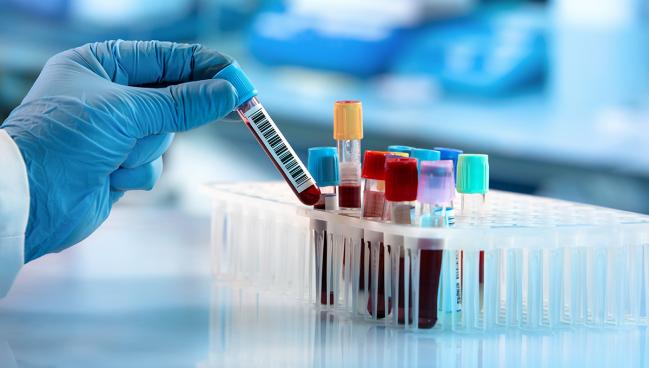ApoB Can Be High, Risky for ASCVD Even When LDL’s Normal
(UPDATED) It’s time to measure apoB more routinely and learn how to best use it in clinical practice, experts argue.

People whose LDL cholesterol is in the normal range—even those without metabolic risk factors—may yet have levels of apolipoprotein B (apoB) that predict an elevated risk of future atherosclerotic cardiovascular disease (ASCVD) events, according to new data.
Researchers say one solution is to measure apoB more routinely as a way of accurately identifying and treating at-risk individuals.
LDL cholesterol is, of course, commonly used to assess ASCVD risk, with both current US and European guidelines giving these tests class 1 recommendations. However, other lipoproteins like Lp(a) and apoB have increasingly captured the attention of preventive cardiologists, with more and more studies hinting that these blood markers may add value in estimating risk. Just this month, one study documented the connection between high apoB and elevations in MI and ASCVD risk. To date, though, the guidelines have only recommended that apoB tests be ordered in patients with high triglycerides.
The data, published online last week as a brief report in JAMA Cardiology, show that not only is there discordance between apoB and LDL-cholesterol levels in a population with metabolic risk factors, but also among individuals considered to be metabolically healthy. The same relationship was seen between apoB and non-HDL cholesterol.
“This study suggests that because there is a substantial range of values of apoB for any value of LDL-C or non–HDL-C, restricting testing of apoB to those with metabolic risk factors will miss a substantial minority of individuals with discordantly elevated levels of apoB relative to LDL-C or non–HDL-C,” write Ahmed Sayed, MBBS (Ain Shams University, Cairo, Egypt), and colleagues.
Ann Marie Navar, MD, PhD (University of Texas Southwestern Medical Center, Dallas), who commented on the study for TCTMD, said the presence of elevated apoB in seemingly healthy adults with normal LDL levels was the most surprising aspect. “We often think about discordance in people with diabetes or metabolic syndrome–though this group did have more discordance than others, we saw many individuals without metabolic risk factors with apoB-LDL-C discordance,” she said in an email.
For the past several years, Navar said she has been measuring apoB in all of her patients. “It’s not affected by the same measurement error we see for LDL-C, you don’t have to be fasting, and it’s a better predictor of risk than LDL-C,” she said.
The new data, among others, seem to support a change in guidelines. Navar said: “I’d like to see apoB recommended as an alternative to LDL-C to track treatment response and to assess lipid-related risk. I also think we need guidelines that give apoB targets in addition to LDL-C to make it more actionable to patients.”
Ranges of ApoB Seen Across LDL Bands
For the study, Sayed and colleagues looked at data from 12,688 adults not taking statins (median age 41 years; 52.9% women) in the National Health and Nutrition Examination Survey between 2005 and 2016. Just under one-quarter (22.7%) had a triglyceride level of 150 mg/dL or greater.
Median population apoB levels of 49, 60, 80, and 140 mg/dL corresponded to LDL values of 55, 70, 100, and 190 mg/dL, respectively. However, a range of apoB levels was present for any level of LDL cholesterol, with that range increasing as LDL increased. For instance, half of the population with a median LDL-cholesterol level of 100 mg/dL had an apoB level between 75 and 86 mg/dL and 95% had an apoB between 66 and 99 mg/dL.
A similar phenomenon was seen for non-HDL cholesterol. For example, 95% of those with a non-HDL level of 130 mg/dL had an apoB value between 73 and 102 mg/dL.
The authors provided a link to a calculator that shows 95% apoB distribution for the range of LDL- and non-HDL-cholesterol levels.
LDL and apoB levels were discordant across a range of subgroups, with greater differences observed in men, Hispanic people, those with poor metabolic health, statin users, older individuals, and those with a higher body mass index as well as higher triglyceride and HbA1c levels.
‘Predictive Value Beyond LDL-C’
The authors say they cannot provide “a threshold for discordance,” because this will differ with clinical context. “Identifying apoB discordance may be particularly helpful when patients have borderline LDL-C values relative to treatment triggers,” they argue.
In particular, patients taking statins can benefit from knowing their apoB levels in that this information can be useful in guiding decisions about lipid-lowering therapy, Sayed and colleagues argue. “However, there are also scenarios in which the apoB level is unlikely to trigger immediate changes to the treatment plan. For example, a patient in the secondary-prevention setting with very high LDL-C levels can probably receive aggressive upfront lipid-lowering therapy without an initial apoB measurement.”
Guidelines provide some help with defining apoB targets, they say, but those specifically outlined in the European Society of Cardiology/European Atherosclerosis Society (ESC/EAS) guidelines might be too high. “In high-risk primary prevention, the guidelines recommend an LDL-C level of 70 mg/dL and an apoB level of 80 mg/dL,” they authors write. “In this analysis, an LDL-C level of 70 mg/dL corresponded to a median apoB level of 60 mg/dL. Although there are likely differences between US and European populations, it is unlikely that these differences would amount to 20mg/dL of discordance between apoB and LDL-C levels.”
If the clinical lipid field was just beginning, knowing what we know today, we would measure apoB rather than LDL cholesterol to evaluate someone’s risk and monitor their response to therapy. David Maron
Commenting on the study for TCTMD, Nicholas Marston, MD (Brigham and Women’s Hospital, Boston, MA), said in an email that all of the new evidence supporting the discordance make clear “the consistent message that apoB provides predictive value beyond LDL-C measurement. Taken together, these analyses make a strong case for incorporating apoB into clinical practice, and future guidelines will need to address how best to do that.”
Even so, changing practice is difficult. David Maron, MD (Stanford University School of Medicine, CA), who commented on the study for TCTMD, said he does not routinely measure apoB due to how engrained LDL is as a target in current guidelines and practice, despite all of the data in favor of the new target. “If the clinical lipid field was just beginning, knowing what we know today, we would measure apoB rather than LDL cholesterol to evaluate someone’s risk and monitor their response to therapy,” he said in an email. “These results nudge me to change my practice, because risk assessment using apoB would be more precise. But habits are hard to break, learning a new language is difficult, and using LDL cholesterol works pretty well.”
Maron acknowledged “the evidence to change guidelines has been available for a long time,” but said that more work will be required to educate clinicians and patients, as well as to recalibrate risk thresholds and treatment targets. “This is a sea change,” he added, “and explains why it has not happened yet despite the wealth of evidence that apoB is a better biomarker than LDL cholesterol.”
Next, Navar said, she would like to see new research start to better address what should be done based on apoB information. “I’d love to see clinical trials shift to focusing on apoB instead of LDL-C. I think this would go a long way to moving us away from LDL-C towards apoB,” she suggested.
Yael L. Maxwell is Senior Medical Journalist for TCTMD and Section Editor of TCTMD's Fellows Forum. She served as the inaugural…
Read Full BioSources
Sayed A, Peterson ED, Virani SS, et al. Individual variation in the distribution of apolipoprotein B levels across the spectrum of LDL-C or non–HDL-C levels. JAMA Cardiol. 2024;Epub ahead of print.
Disclosures
- Sayed, Navar, and Maron report no relevant conflicts of interest.





Comments